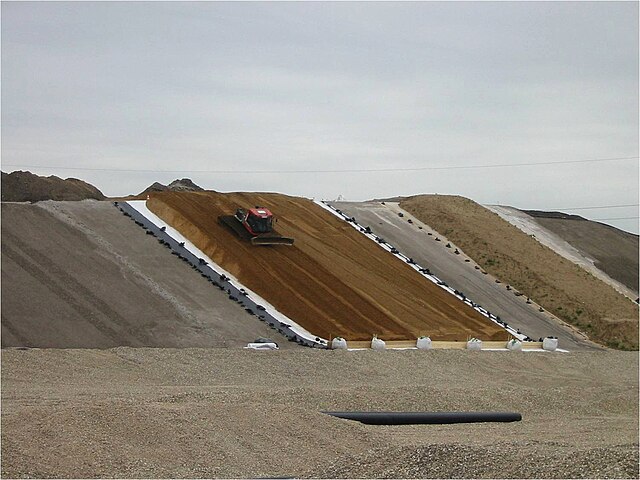Geosynthetics are synthetic products used to stabilize terrain. They are generally polymeric products used to solve civil engineering problems. This includes eight main product categories: geotextiles, geogrids, geonets, geomembranes, geosynthetic clay liners, geofoam, geocells and geocomposites. The polymeric nature of the products makes them suitable for use in the ground where high levels of durability are required. They can also be used in exposed applications. Geosynthetics are available in a wide range of forms and materials. These products have a wide range of applications and are currently used in many civil, geotechnical, transportation, geoenvironmental, hydraulic, and private development applications including roads, airfields, railroads, embankments, retaining structures, reservoirs, canals, dams, erosion control, sediment control, landfill liners, landfill covers, mining, aquaculture and agriculture.

Geotextile sandbags protected the historic house Kliffende on Sylt island against storms, which eroded the cliffs left and right from the sandbag barrier.
Geotextile sandbags can be approximately 20 m long, such as those used for the artificial reef at Narrow Neck, Queensland.
Geosynthetic products
Geogrids are used to prevent sliding on long and steep slopes during installation and use of a landfill capping system.
Geotextiles are versatile permeable fabrics that, when used in conjunction with soil, can effectively perform multiple functions, including separation, filtration, reinforcement, protection, and drainage. Typically crafted from polypropylene or polyester, geotextile fabrics are available in two primary forms: woven, which resembles traditional mail bag sacking, and nonwoven, which resembles felt.
A selection of non-woven and woven geotextile samples
Geotextile sandbags can be 20 m long, such as those used for the artificial reef at Narrow Neck, Queensland.
A silt fence on a construction site.
Geotextile sandbags protected the historic house Kliffende on Sylt island against storms, which eroded the cliffs left and right from the sandbag barrier.






